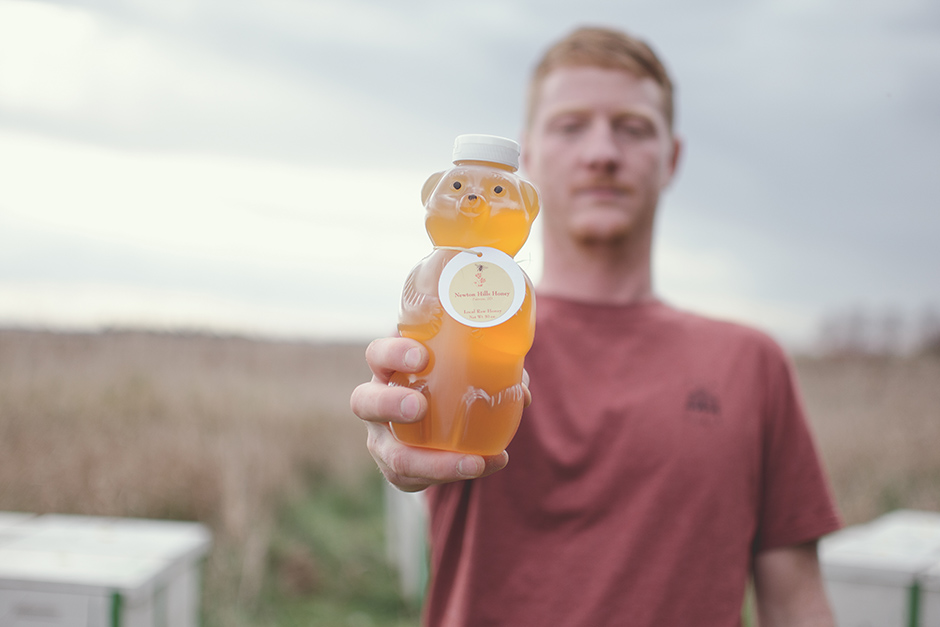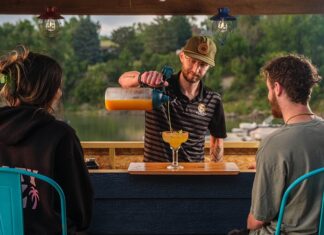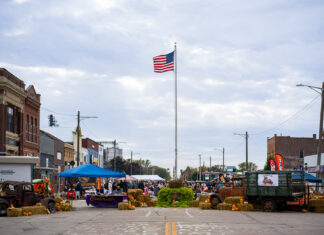Black Hills Woodworks — Adam Horton

“Shop local” is more than just a mantra. It’s a commitment to our families and our neighbors and our communities. It’s a statement that we would rather put our money toward quality, craftsmanship, and the growth of our own economy. This holiday season, consumers have the ability to reject quantity, to take a stand against another cart full of cheap crap, and make thoughtful choices that will be cherished for years to come. From sweet stocking stuffers to heirloom furniture, South Dakotans are using their own hands to create items sure to delight everyone on your list.
“I stand or lay on all of my furniture.”
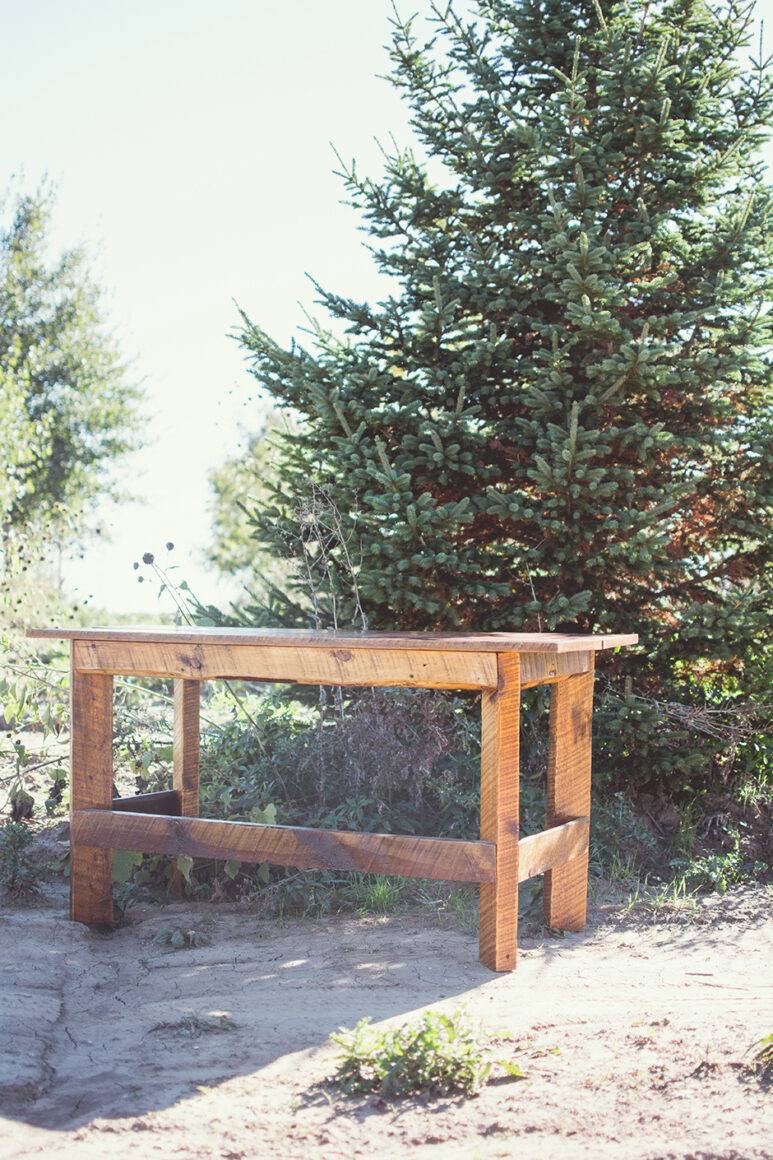
lack Hills Woodworks owner Adam Horton was never interested in shop class, which makes his new venture as surprising to him as anyone. But after eight years in the Navy, and some time spent in Seattle, Brookings-born Yankton-raised Horton found himself taking over his family’s Hot Springs bison ranch, and surrounded by one prominent material.
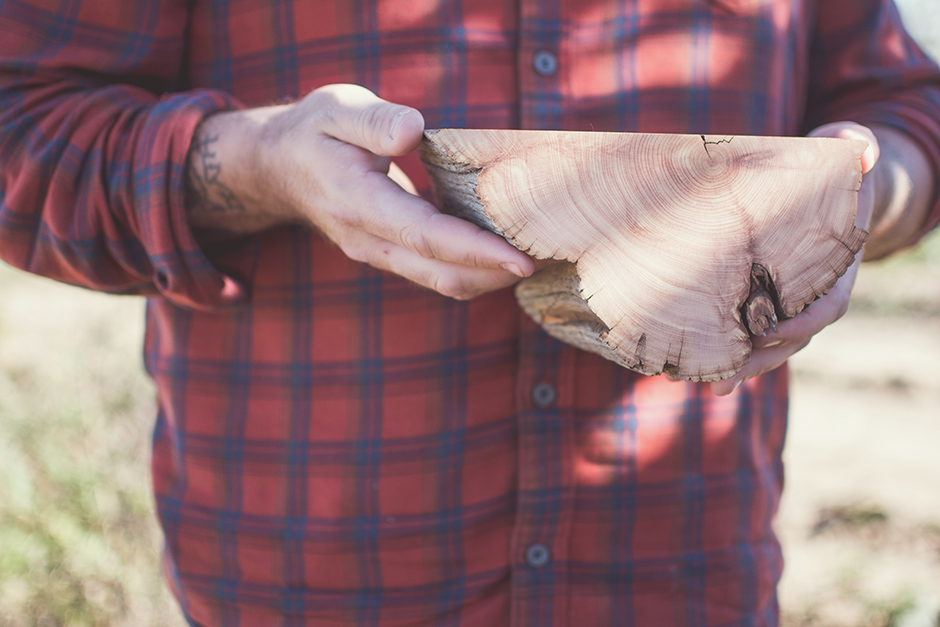
“I noticed there was a lot of wood,” he explained. “Some old buildings, some old barns sitting around the property. My dad said, ‘Why don’t you pile it up and burn it?’ And that’s what a lot of people do, especially West River. But I thought it was great old wood, and decided to build myself a coffee table.”
That table led to others, and shelves, desk accessories, toolboxes, and much more – all created from the cedar and ponderosa pine found on the property. When he needed to replace the old fence with a new eight-footer, he dug out the posts and made floating shelves. Although the self-taught craftsman has been building furniture for just over a year, his work already bears distinctive hallmarks. First and foremost, the natural character of the wood remains prominent.
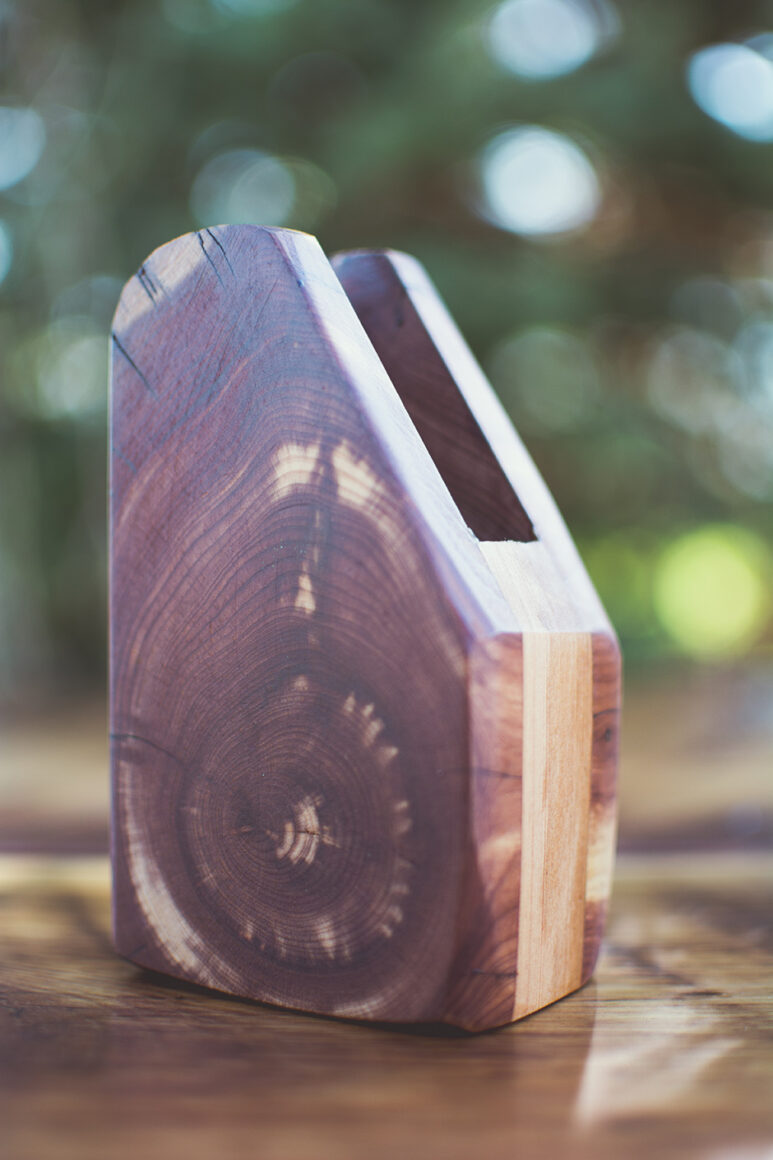
“The legs here are original true 2x4s,” said Horton, pointing to one of his desks. “You’re not going to see them like this anymore, because they’re 110-plus years old. They don’t cut lumber like this today.”
Another important element in Horton’s work is the absence of visible screws or bolts. This means he has to essentially build each piece from the inside out. And lastly, each piece is incredibly durable.

“I stand or lay on all of my furniture,” he said. “Sometimes I use old pieces of iron I found out in the pasture for extra strength.”
Horton’s family and the ranch are important elements of his brand, literally. He uses a teepee box symbol, which is the brand that has been used on their livestock for three generations. And a portion of each sale benefits a nonprofit for veterans, which is personal for him as a veteran from a long line of service members.
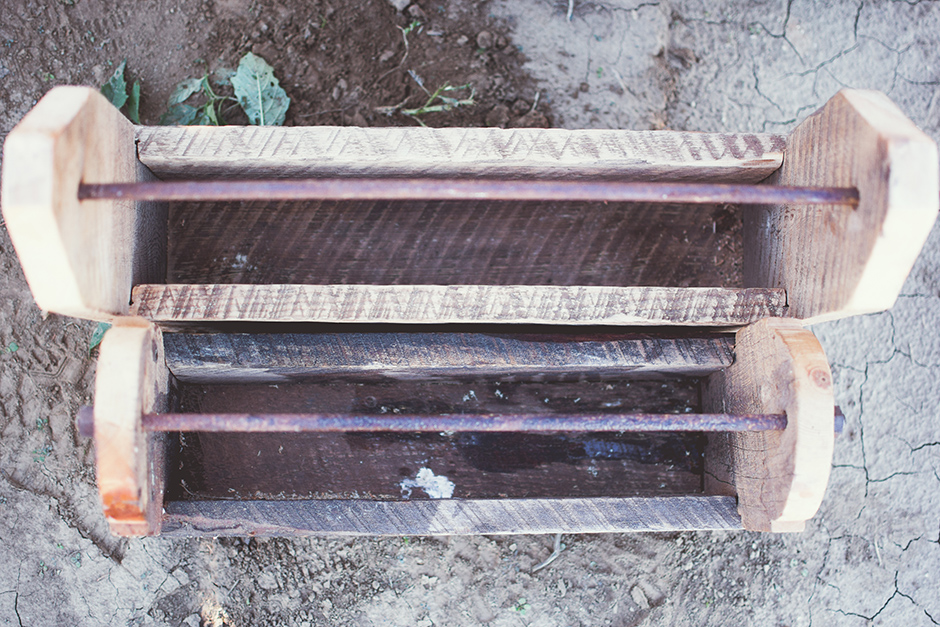
For Horton, showing pride in one’s family, community, and country through our purchasing power is just common sense. “If you’re not getting something made locally, something someone’s going to stand behind, what’s the point?”
Prairie Dance — Terri Schuver

Prairie Dance started on a whim. While on vacation 19 years ago, Terri Schuver and a friend were inspired to create beautiful, durable metal decor. To make sure it actually happened, they took a leap of faith. As soon as they returned home, and before a single piece was made, they signed up for the Washington Pavilion’s Sidewalk Arts Festival.
“It took us a few months to figure out what had happened…”
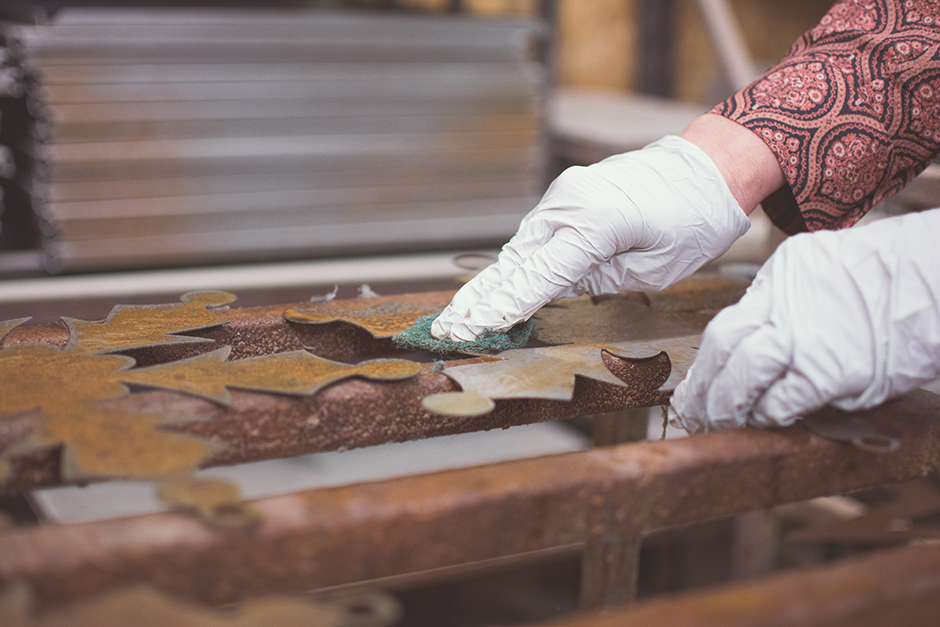
The next several months were full of research and design. A local company was employed to laser cut sheets of steel, and the husbands helped with the initial welding. But when it came time to give their creations the signature rust they were looking for, something wasn’t right. It was a hot, sticky August evening. The solution wasn’t working, so they called it a night.
The morning was a different story. Deep orange swirls and subtle greens greeted the friends from the floor of the warehouse space. The artful rust was then sealed with polyurethane to protect it from further oxidation, and a company was born.
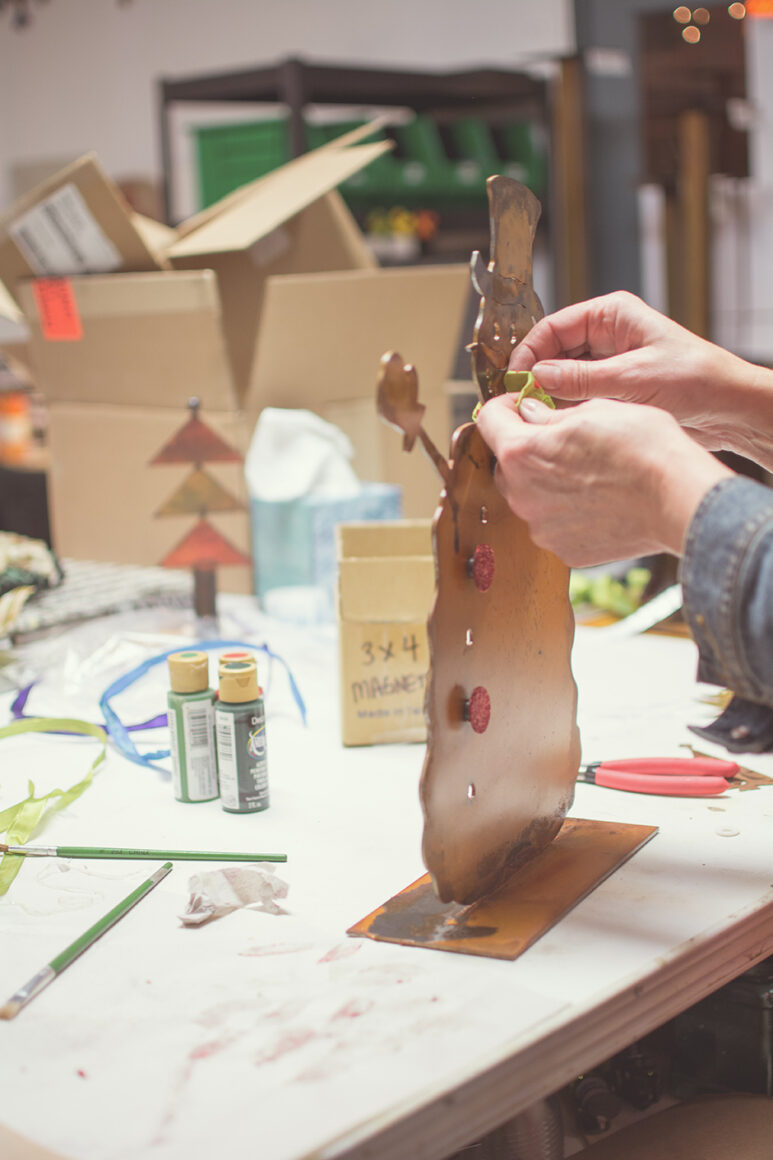
“It took us a few months to figure out what had happened, and to recreate the same effect,” Schuver remembered.
Among the first designs were tabletop pine trees and angels, which remain highly successful parts of the repertoire. Butover the years, the line has grown to include roughly 100 items, including cookbook holders, garden stakes, and decorative signage.
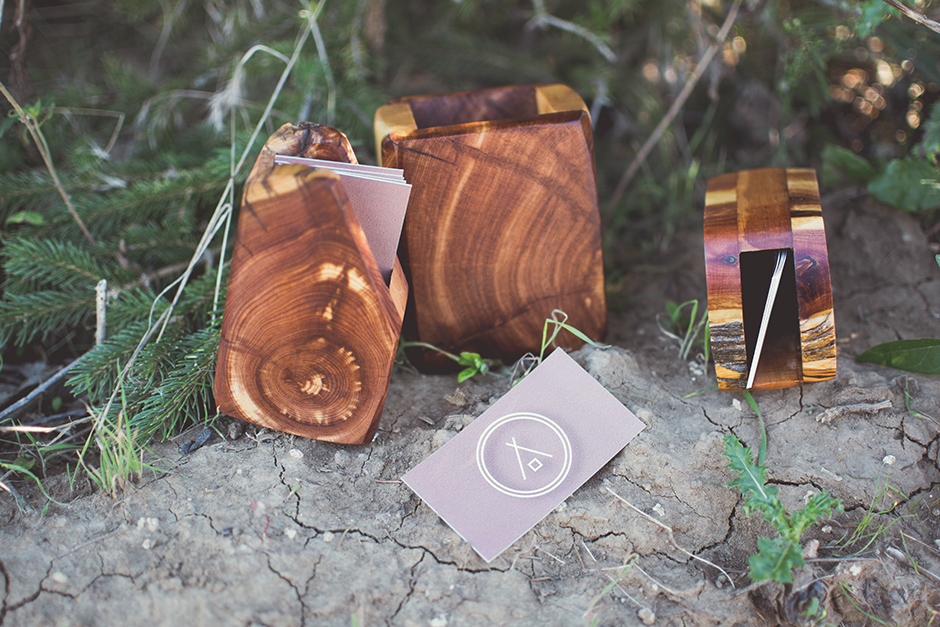
Within a year, Schuver was pursuing Prairie Dance on her own, selling her wares at regional arts fairs. After a few seasons of promising sales at the local level, she was approached by a wholesale buyer; an encounter that would change the business’s trajectory. He encouraged her to think bigger.
“We had to figure out a pricing strategy, so I put together an Excel spreadsheet with what I thought it cost to finish each piece and the labor involved,” remembered Schuver. “It was a stab in the dark at that time, but it came to be one of the most valuable things I ever did. It made me analyze all those costs in a manner that allowed us to sell profitably to other stores right out of the chute.”
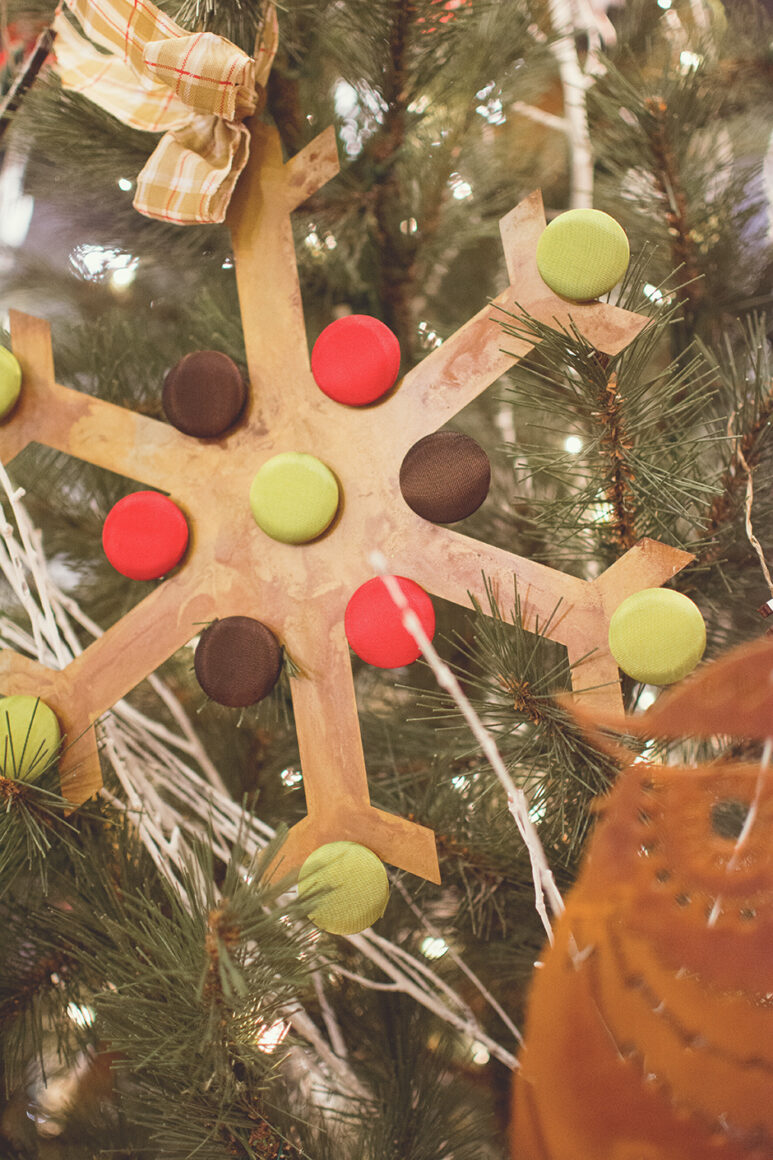
Schuver began attending wholesale trade shows throughout the country, selling Prairie Dance to retailers nationwide. 15 years ago, she took over a space in 8th and Railroad Center on Sioux Falls’ up-and-coming East Bank. It initially housed studio space, a small coffee shop, and a retail space to sell Prairie Dance and products from a few select artisans. Over the years, the coffee shop closed and the store, Sticks and Steel, grew to 2,000 feet, with an additional 2,000 feet of behind-the-scenes workspace.
In addition to Prairie Dance, Schuver now sells products made by over 300 different American and Canadian makers at Sticks and Steel. She still has her metal laser cut locally and employs a welder part-time, plus a dozen staff members to keep both companies running and ideas fresh. As a result, Prairie Dance is a line with more than 100 items, sold in all 50 states.

“Sometimes the ideas are mine and the people I work with help flesh out the idea,” Schuver said. “Sometimes the ideas are theirs and I help flesh them out, since I know what will work with the laser and gauge of steel. So there’s really a lot of contribution. The ideas come from everywhere – magazines, TV, anywhere that will trigger inspiration. Whether it’s a practical need or decorative, that’s where it starts, then we design what makes sense.”
Newton Hills Honey — Josh Montgomery
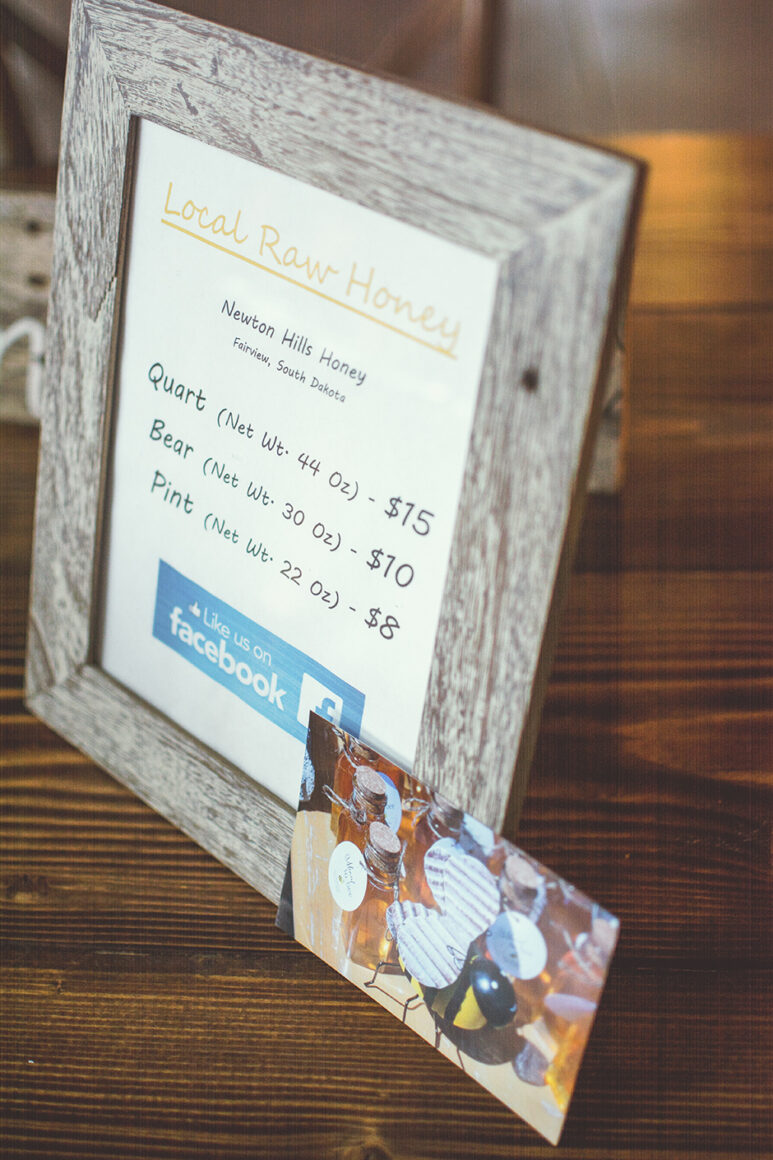
Josh Montgomery has had honey on his mind since he was just a kid. At 14, he was recruited by a neighbor in his tiny hometown of Fairview to do the “dirty jobs” around his apiary. Each summer, Montgomery was given more responsibility, and gained more knowledge about what it meant to be a beekeeper. Fast forward a decade, and he is selling his own product under the label Newton Hills Honey.
After working an uninspiring stint at a financial institution, Montgomery returned to Fairview to work full time for his former boss, Lyndon Ryder of Big Sioux River Honey. BSRH is a commercial operation with roughly 1,800 hives, spread out in about 50 locations. It’s work that gives Montgomery a lot of satisfaction.
“I say the richest man in the world couldn’t buy better honey than that.”
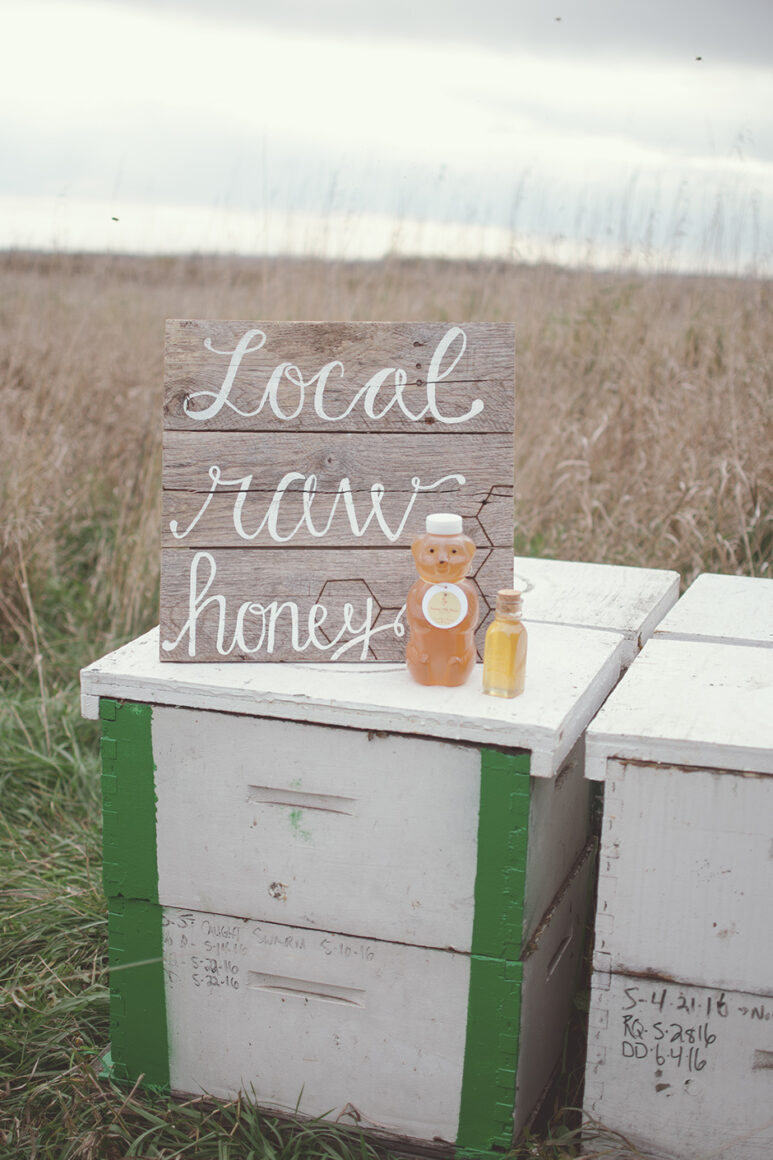
“You get to see a product of your work from beginning to end,” he said. “You get a sense of fulfillment. It’s a physical job. You always have to be thinking
in the future. It keeps your brain active and your body active. And people love honey.”
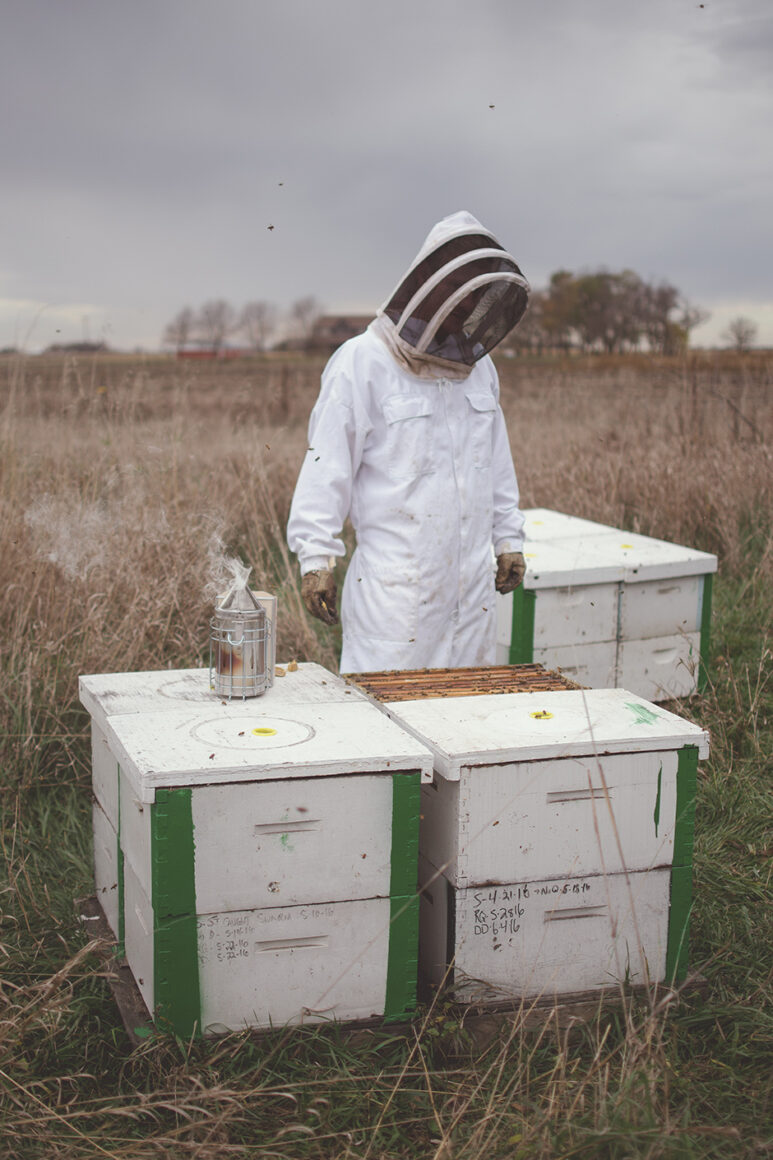
Over the years, Ryder has become more than a boss to Montgomery. He views his boss as a mentor, and he takes his role in that seriously. On the side, he bought four hives of his own last year. This year, that number has grown to 23.
“In the spring, we can take established strong hives and make splits off them to create another hive,” Montgomery explained. “For a somewhat small investment, you can increase your numbers if you have strong hives. You can just buy a queen.”
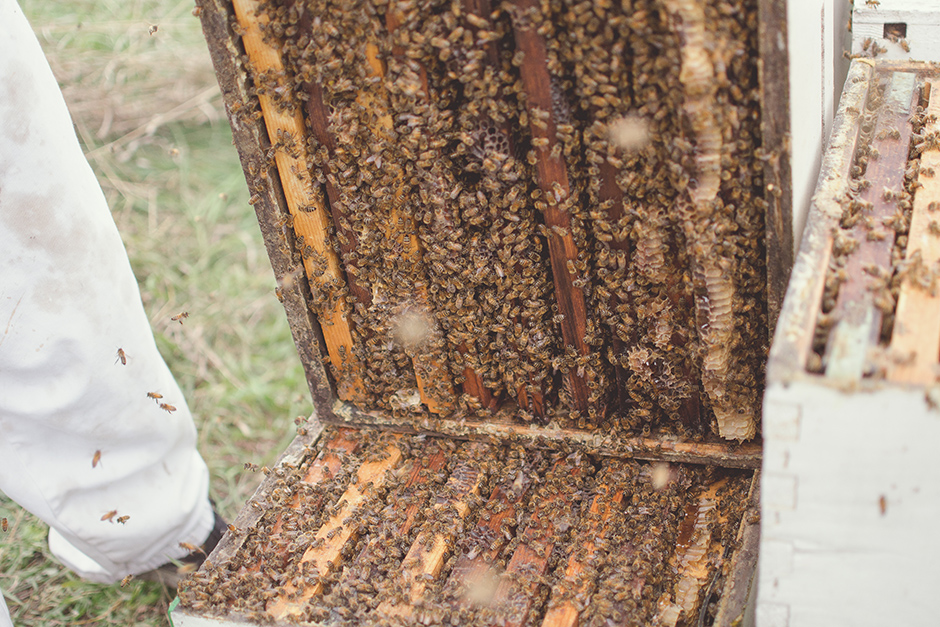
Buying a queen isn’t a matter of running to the ag supply store, though. They have to be ordered, often from warmer climate states like Hawaii, California and Georgia. Once she arrives, in an enclosure surrounded by attendants, it takes several days for the new hive to adapt to her smell before she can be released and complete the process. Montgomery says even with his years around the apiary, he is still learning from these insects every day.
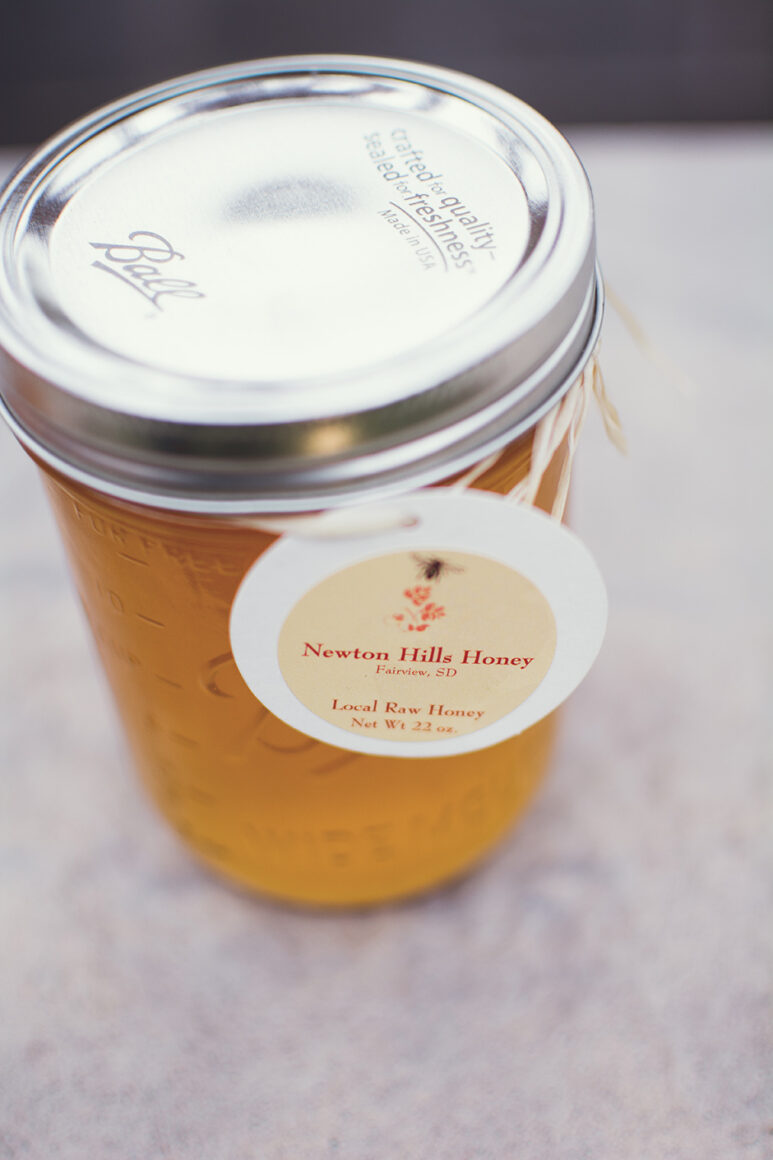
Although South Dakota is consistently one of the nation’s top honey producing states, much of that production is West River, where bee-friendly vegetation is more prevalent. Corn and soybeans are big business East River, but bees prefer crops like alfalfa and wide fields of clover. They also love to pollinate almonds, which is what Montgomery’s hives are doing right now in California. Between his and Ryder’s hives, they fill five semi loads, bound for the Golden State.
“That’s a big aspect of our income, almond pollination,” Montgomery explained. “Without that, it would be difficult to make it just on honey.”
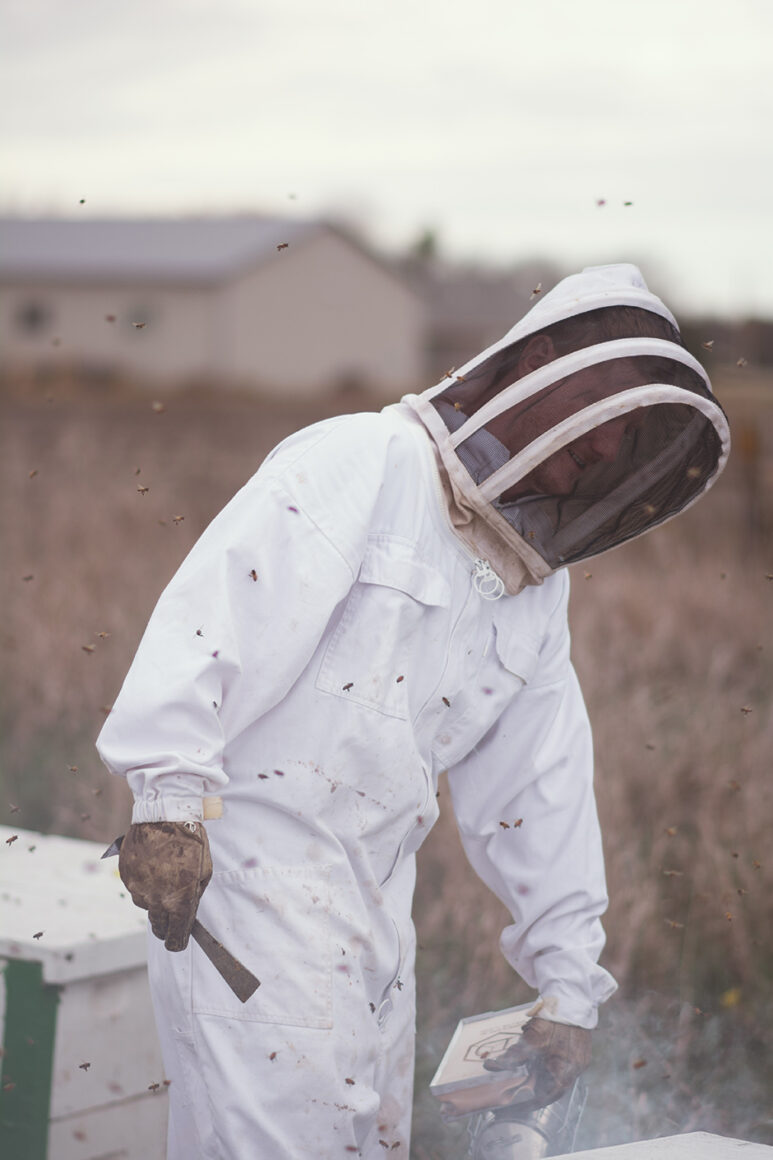
Newton Hills Honey is currently sold in three sizes: a pint, a quart, and a two-pound honey bear. In addition to a couple of local salons, where his wife and a friend work, he sells it each Wednesday evening at Harrisburg’s Meadow Barn. During these market nights with live music and vendors, his product has been very well received.
That’s because, Montgomery says, it’s just good honey. “I say the richest man in the world couldn’t buy better honey than that.”
Read the full story and meet the other makers in the December issue or click here.


